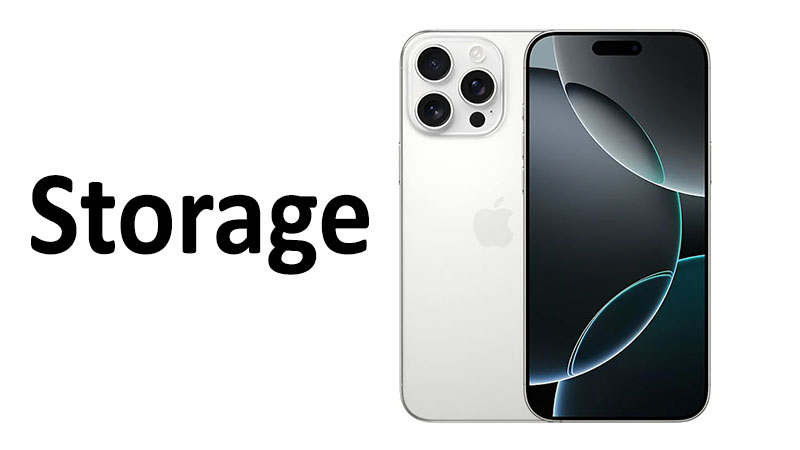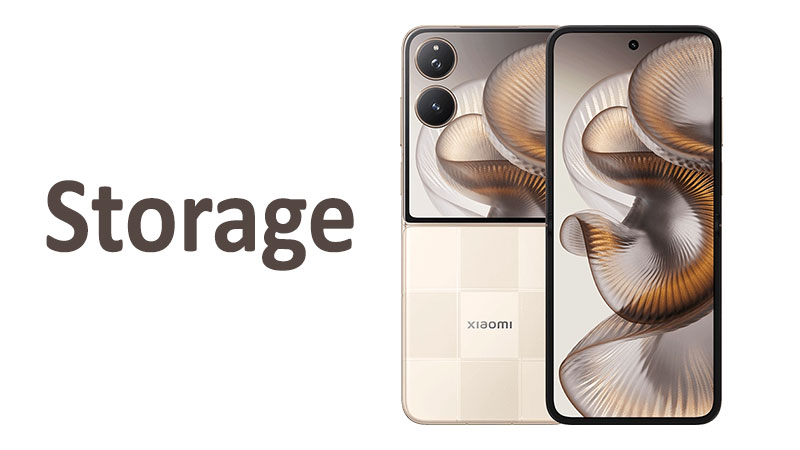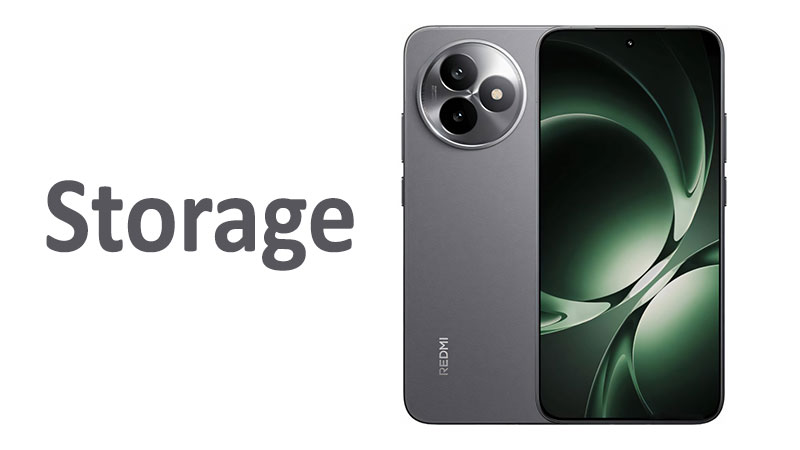The Apple iPhone 16 Pro is a powerhouse of a smartphone. Its storage is a critical component of its performance. Choosing the right storage capacity is a key decision for any prospective buyer. This article explores the Apple iPhone 16 Pro storage, covering its capacity, type, and the implications for real-world use. We will help you understand the available options and choose the best one for your needs.
Storage Capacity Options and What They Mean
The iPhone 16 Pro offers a range of storage options. These capacities are designed to cater to different types of users. Understanding these tiers is the first step to making an informed choice.
- 128GB: This is the base model storage for the iPhone 16 Pro. It is suitable for light users. This includes people who primarily stream content, use social media, and rely on cloud services like iCloud. If you don’t take many photos or videos and rarely download large apps, 128GB might be enough.
- 256GB: This is often considered the sweet spot for most users. It provides ample space for a large number of apps, photos, and videos. It is a good choice for someone who takes a lot of pictures and videos but does not shoot extensive 4K footage. It also provides a comfortable buffer for future software updates and growing app sizes.
- 512GB: This capacity is for heavy users and content creators. If you are a mobile gamer or a professional who shoots a lot of 4K ProRes video, this is an excellent option. It allows you to store a massive library of high-quality media. You can also keep numerous large files and applications on your device without concern.
- 1TB: The top-tier option is designed for true professionals. This includes filmmakers, videographers, and anyone who needs a portable device to handle large video files. It offers the freedom to shoot hours of high-resolution video. The 1TB model is a significant investment. It is primarily for those whose work or hobbies demand maximum on-device storage.
The Technology Behind the Storage: NVMe NAND Flash
Apple uses a specific type of storage technology in its iPhones. The iPhone 16 Pro, like its predecessors, uses Non-Volatile Memory Express (NVMe) based NAND flash storage. This is a crucial detail for understanding performance.
NVMe vs. Other Standards
NVMe is a protocol designed for solid-state drives (SSDs). It is known for its high-speed data transfer rates and low latency. It is far superior to older standards like eMMC or UFS 3.1. However, the iPhone’s specific implementation is proprietary. It is not the same as a standard M.2 NVMe SSD found in a laptop.
Potential Changes in NAND Type
There have been industry rumors about Apple potentially switching the NAND flash type for its higher-capacity models. Specifically, there has been speculation about a move from Triple-Level Cell (TLC) NAND to Quad-Level Cell (QLC) NAND for the 1TB model.
- TLC NAND: This technology stores three bits of data per memory cell. It is generally faster and more durable than QLC.
- QLC NAND: This technology stores four bits per cell. It is denser and cheaper to produce. However, it can have slower write speeds and lower endurance.
If Apple were to use QLC NAND for the 1TB iPhone 16 Pro, it could lead to slightly slower write performance for those specific models. This is a point of concern for professionals who regularly transfer large files. The potential trade-off is a lower manufacturing cost, which could be passed on to the consumer.
Pros and Cons of the Storage System
The iPhone 16 Pro’s storage system has several notable advantages and some potential drawbacks.
Pros:
- High Performance: The NVMe-based storage provides exceptionally fast read and write speeds. This is critical for everything from app loading to 4K video editing. The quick access to data makes the entire user experience feel snappy and responsive.
- Seamless Integration: Apple’s storage is deeply integrated with the A18 Pro chip and iOS. This allows for optimal performance and efficiency. It ensures that the software and hardware work together perfectly.
- Range of Options: The availability of 128GB to 1TB models caters to a wide spectrum of users. This ensures that you can find a device that fits your budget and needs.
Cons:
- No Expandable Storage: A major downside is the lack of a microSD card slot. This is a long-standing Apple design choice. It means you are locked into the storage capacity you purchase. You cannot add more space later.
- Cost: Higher storage tiers come with a significant price increase. The jump from one capacity to the next can add hundreds of dollars to the total cost. This makes the higher-end models less accessible for many consumers.
- Potential Performance Discrepancy: If the rumors about QLC NAND for the 1TB model are true, there could be a performance gap between the 1TB and other capacities. This would be a crucial point for professional users to consider.
Specialized Comparisons: iPhone 16 Pro vs. iPhone 15 Pro and Android Competitors
iPhone 16 Pro vs. iPhone 15 Pro
In terms of storage capacity, the iPhone 16 Pro and its predecessor are very similar. Both offer the same 128GB, 256GB, 512GB, and 1TB options. The iPhone 16 Pro Max, however, starts at 256GB, just like the iPhone 15 Pro Max.
The main difference lies in potential underlying technology changes. The iPhone 16 Pro might see an upgrade in its flash memory controller or a shift to a new NAND type. This could lead to incremental speed improvements. The real-world impact for most users would be minimal. However, it could be noticeable for professionals handling extremely large files.
iPhone 16 Pro vs. Android Flagships
Many Android flagship phones utilize Universal Flash Storage (UFS) 4.0. This is an advanced storage standard. UFS 4.0 offers impressive sequential read and write speeds. In some benchmarks, UFS 4.0 can rival or even surpass Apple’s NVMe implementation.
The key difference is not just the raw speed. It is also the deep software and hardware integration on the iPhone. Apple’s optimized ecosystem ensures that its storage performs exceptionally well in real-world scenarios. Android phones may have fast UFS 4.0. But the overall user experience depends on the specific manufacturer’s software optimizations.
Important Points a Buyer Should Know
- Storage is an Investment: When buying an iPhone, consider storage a long-term investment. You cannot upgrade it later. Think about your future needs.
- Cloud Storage is a Lifeline: iCloud is an integral part of the Apple ecosystem. Using cloud storage can significantly reduce the need for large local storage. However, this relies on a stable internet connection.
- Video is a Storage Hog: The iPhone 16 Pro’s camera can shoot high-quality 4K video. This consumes a huge amount of space. A single minute of 4K ProRes video can be several gigabytes. If you plan to shoot a lot of video, the 512GB or 1TB model is essential.
- Check the Pricing: The price difference between storage tiers can be substantial. Make sure you factor this into your budget. Sometimes, the added cost is not worth it for your usage patterns.
Conclusion
The Apple iPhone 16 Pro storage system is a mix of powerful performance and strategic options. Apple’s choice to use NVMe-based NAND flash ensures a fast and fluid user experience. The range of capacities from 128GB to 1TB caters to everyone from the casual user to the professional creator.
For the average consumer, the 256GB model offers the best balance of cost and functionality. It provides enough space for most apps, photos, and videos. It also gives you peace of mind for future use.
For professionals and content creators, the 512GB or 1TB models are necessary. These capacities support the demands of high-resolution video and photo work. The potential use of QLC NAND in the 1TB model is a point to monitor. For most users, this detail is not a major concern.
Ultimately, the right choice for iPhone 16 Pro storage depends on your personal habits. Evaluate how you use your phone today. Consider how you might use it in the future. Then, choose the capacity that will support your digital life for years to come.
FAQ
What are the available storage capacities for the iPhone 16 Pro?
The iPhone 16 Pro is available in four storage capacities: 128GB, 256GB, 512GB, and 1TB.
Does the iPhone 16 Pro have a microSD card slot?
No, the iPhone 16 Pro does not have a microSD card slot. The storage is fixed and cannot be expanded after purchase.
Is 128GB enough storage for the iPhone 16 Pro?
For a light user who relies on cloud services for photos and videos, 128GB can be sufficient. However, for most people, 256GB is a safer, more future-proof option.
What type of storage does the iPhone 16 Pro use?
The iPhone 16 Pro uses NVMe-based NAND flash storage, a high-speed technology that delivers fast read and write performance.
How does the iPhone 16 Pro storage compare to the iPhone 15 Pro?
The iPhone 16 Pro offers the same storage tiers as its predecessor. Any performance differences are likely to be minor. The main upgrade is in other areas of the phone.



